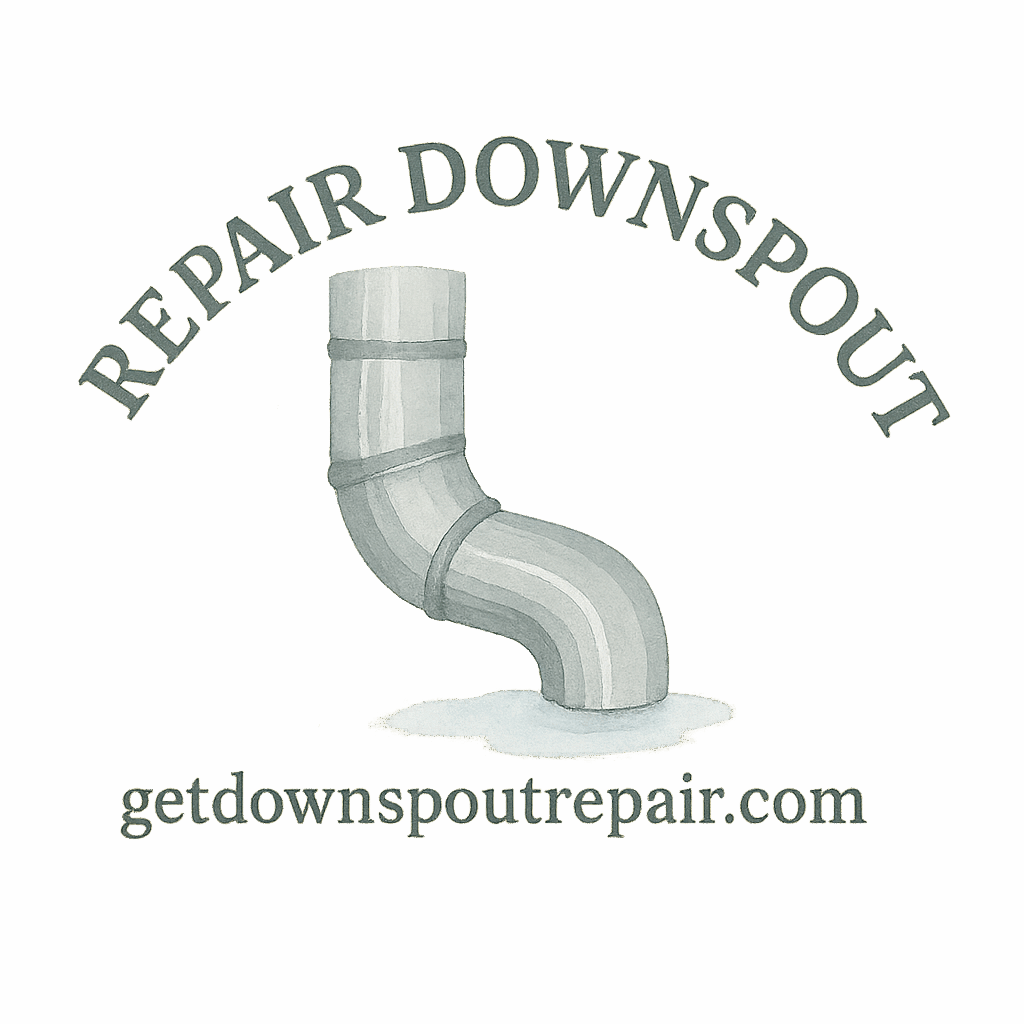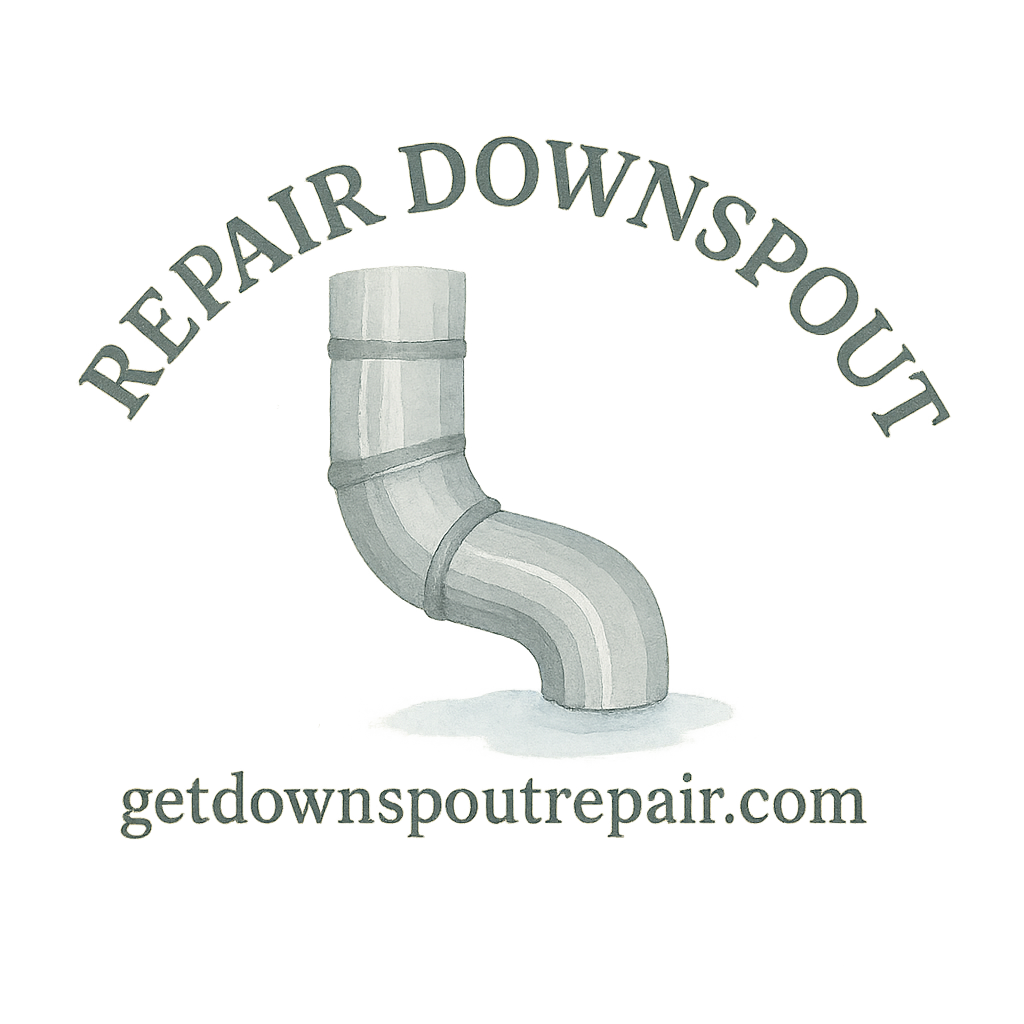Introduction
Ever notice those annoying puddles forming near your home after a heavy rain? That’s not just a small inconvenience—it’s a warning sign. Water pooling around your foundation can lead to serious problems like basement flooding, foundation cracks, and expensive water damage repairs. The good news? You don’t always need a professional to fix these issues. With some simple DIY downspout repair solutions, you can tackle water pooling problems head-on, protect your home, and even save a good chunk of money in the process.
In this guide, we’ll walk through 10 effective DIY downspout repair solutions you can try today. Whether you’re dealing with clogged downspouts, leaks, or poor drainage, you’ll find a fix that works for your home.
Why Downspout Repair Matters for Your Home
The dangers of water pooling
Water may look harmless when it collects around your house, but over time, it’s a silent destroyer. Pooling water can seep into your foundation, weaken structural supports, and create mold problems. If left unchecked, that small puddle can turn into a costly nightmare.
How downspouts protect your foundation
Your gutters and downspouts are like your home’s drainage system. They guide rainwater off your roof and away from your foundation. When they fail, the water has nowhere to go but down—right into the soil near your home. Proper downspout repair ensures that water flows safely away, keeping your home dry and secure.
Common Signs You Need Downspout Repair
Visible water pooling
If you see puddles near your home’s base after rain, that’s a red flag. It means your downspouts aren’t doing their job.
Cracks in your foundation
Tiny cracks might not seem like much, but they’re often caused by water pressure building up against your foundation.
Overflowing gutters
When gutters overflow, the downspout may be clogged or misaligned, sending water right where you don’t want it.
Tools and Materials You’ll Need
Basic DIY repair tools
- Ladder
- Work gloves
- Screwdriver or drill
- Caulking gun
- Hacksaw (for replacing sections)
Affordable materials for budget-friendly fixes
- Downspout extensions
- Splash blocks
- Caulk or gutter sealant
- Flexible piping
- Gutter guards
(For more tools, check out this handy list of DIY tools.)
DIY Downspout Repair Solutions
1. Clearing out clogs in your downspout
Clogs are the number one reason for water pooling. Leaves, dirt, and even bird nests can block water flow. Simply remove the downspout, flush it with a hose, or use a plumber’s snake to push debris out. More on handling clogs here: downspout clog fixes.
2. Extending downspouts away from the foundation
If your downspout ends just a foot from your home, that’s too close. Add extensions to carry water at least 4–6 feet away. Flexible extensions are cheap and effective.
3. Installing splash blocks for better water flow
A splash block is like a runway for water. Placed under the downspout, it directs water away from your foundation, reducing erosion and pooling.

4. Sealing leaks with caulk or sealant
Small leaks along seams can drip water near your home. Apply gutter caulk or waterproof sealant to stop those leaks instantly.
5. Reattaching loose downspouts
Loose brackets let your downspout wobble or pull away from the wall. Tighten or replace screws to keep it secure.
6. Realigning misdirected downspouts
Sometimes downspouts shift or bend out of place. Adjust them so water flows straight into extensions or splash blocks instead of pooling.
7. Using flexible extensions for tricky spots
Have tight corners or landscaping in the way? Flexible extensions bend easily, making them perfect for awkward areas.
8. Replacing damaged downspout sections
Rust, dents, or cracks can cause leaks. Cut out the bad section with a hacksaw and replace it with a new piece.
9. Adding underground drainage solutions
For stubborn pooling, burying a drainage pipe underground can channel water even farther away. This is more advanced but still doable for DIYers. See drainage protection tips.
10. Preventing future clogs with gutter guards
Prevention is easier than constant cleaning. Gutter guards keep leaves and debris out, ensuring smooth water flow all year.
Budget-Friendly Tips for DIY Downspout Repair
How to save money on repairs
Skip the fancy gear and stick to essentials. Many fixes require nothing more than a few brackets, caulk, and extensions. Check out these budget tips for more ways to save.
Choosing between DIY and professional help
DIY is perfect for small issues like clogs, leaks, or loose brackets. But if you notice large cracks or serious water damage, it might be time to call in a licensed contractor.
When to Call a Professional
Identifying major water damage
If water has already seeped into your basement or foundation, that’s a sign you need professional repair services.
When DIY won’t be enough
Some jobs, like underground drain installation or major structural repairs, are best left to the pros. Learn more about professional help here.
Preventing Future Water Pooling Problems
Regular gutter and downspout maintenance
Clean your gutters at least twice a year. A little prevention saves a lot of repair. See gutter cleaning tips.
Seasonal inspections
Check your downspouts in spring and fall. Look for leaks, loose connections, or early signs of wear.
Conclusion
Water pooling may seem harmless at first, but it’s one of the biggest threats to your home’s foundation. Luckily, with a few simple tools and some determination, you can handle most issues yourself. These 10 DIY downspout repair solutions give you the power to protect your home, prevent costly repairs, and keep your yard looking great.
The key is to stay proactive—don’t wait for water damage to strike. A little DIY effort today means a stronger, safer home tomorrow. And if the job feels too big, don’t hesitate to call in professional help.
FAQs
1. How far should my downspouts extend from my home?
Ideally, downspouts should extend at least 4–6 feet away from your foundation.
2. Can I repair a rusty downspout, or do I need to replace it?
Small rust spots can be patched with sealant, but heavily rusted sections should be replaced.
3. How often should I clean my downspouts and gutters?
Twice a year—once in the spring and again in the fall—is recommended.
4. Are underground drains expensive to install?
They can be pricier than surface fixes, but they’re worth it for severe water pooling problems.
5. Do gutter guards completely prevent clogs?
Not entirely, but they drastically reduce how often you’ll need to clean your gutters.
6. Can I use PVC pipes for downspout extensions?
Yes! PVC is durable and affordable, making it a great choice for DIY drainage solutions.
7. What’s the fastest DIY fix for water pooling?
Attaching a simple extension to your downspout is the quickest and most effective short-term solution.


